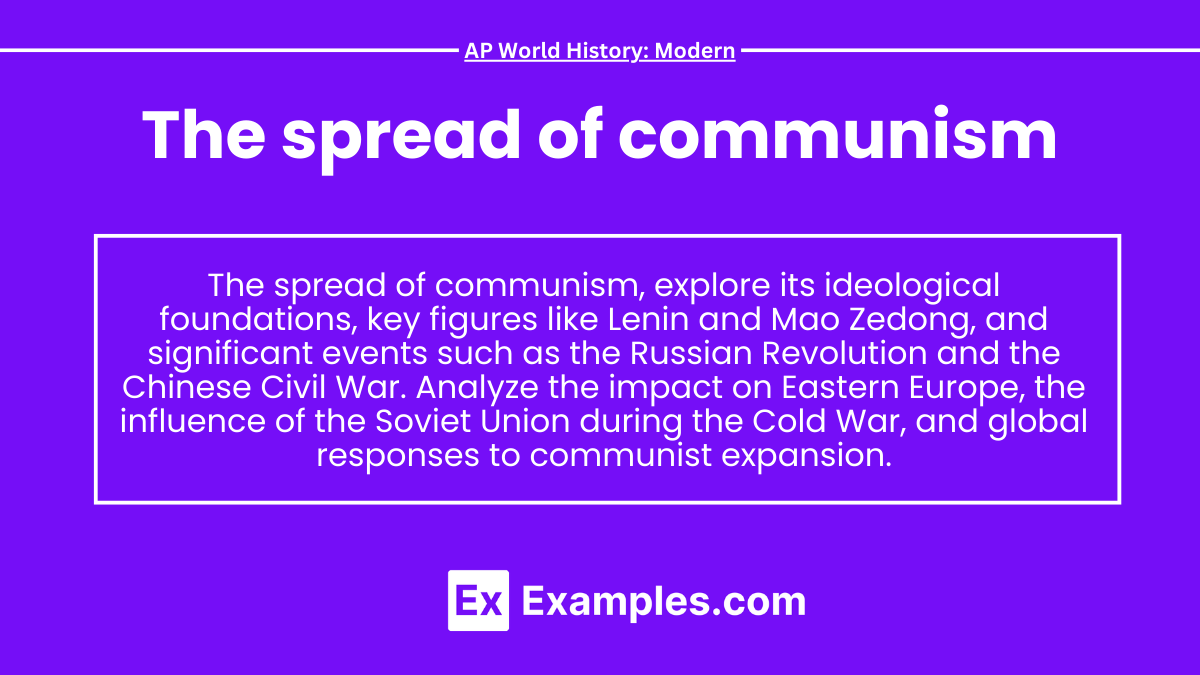The spread of communism, initiated by the Bolshevik Revolution in 1917, significantly influenced global politics throughout the 20th century. Key events included the establishment of communist regimes in China, Eastern Europe, and Cuba, as well as the ideological conflict during the Cold War. The eventual decline of communism in the late 20th century reshaped international relations.
Learning Objective
In studying The Spread of Communism for AP World History: Modern, you should focus on understanding the origins and principles of communism, key revolutionary movements, the impact on global politics during the Cold War, and the reasons for its decline and ongoing influence in modern societies.
1. Russian Revolution (1917)
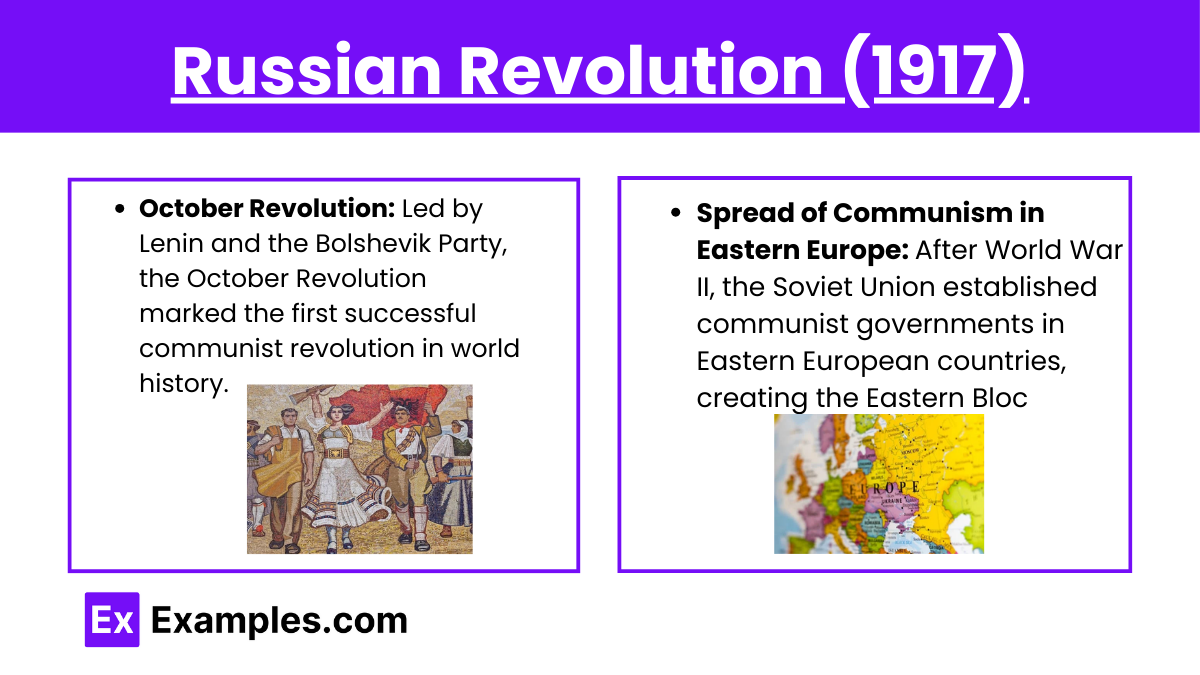
- October Revolution:
- Led by Lenin and the Bolshevik Party, the October Revolution marked the first successful communist revolution in world history. It overthrew the provisional government in Russia and established the Russian Soviet Federative Socialist Republic.
- Lenin implemented war communism, followed by the New Economic Policy (NEP) to stabilize the post-revolution economy.
- Spread of Communism in Eastern Europe:
- After World War II, the Soviet Union established communist governments in Eastern European countries, creating the Eastern Bloc (e.g., Poland, Hungary, East Germany, Czechoslovakia).
- The Iron Curtain divided communist Eastern Europe from the capitalist West, marking the beginning of Cold War tensions.
2. Communism in Asia
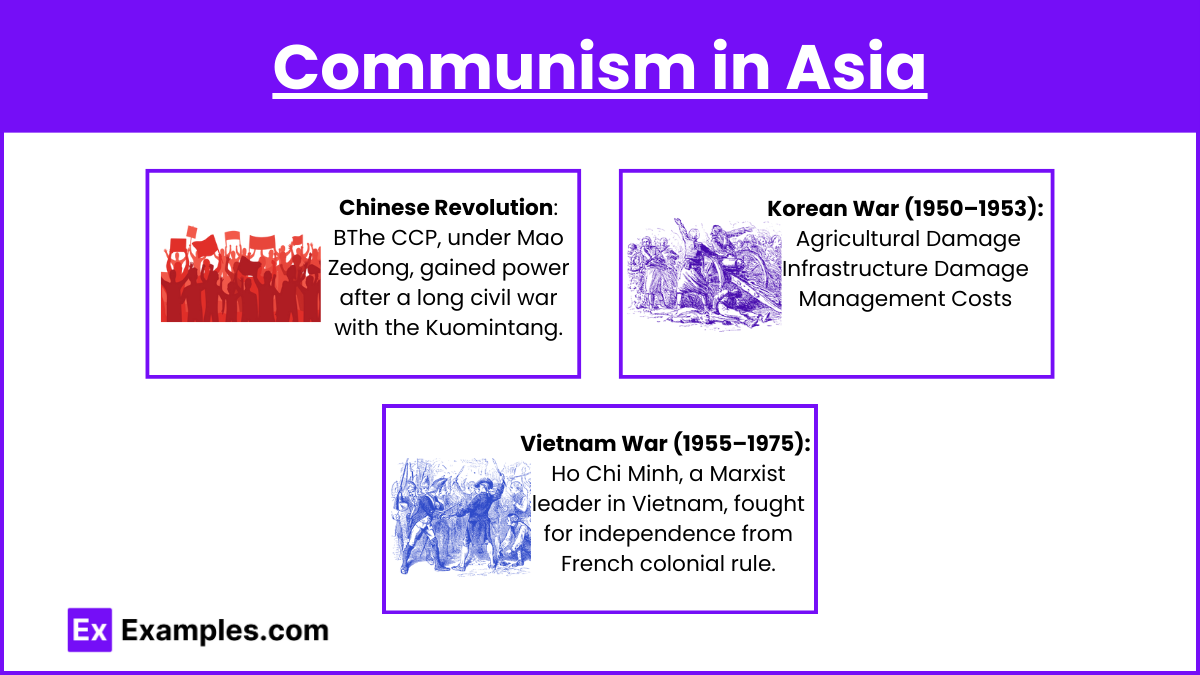
- Chinese Revolution:
- The CCP, under Mao Zedong, gained power after a long civil war with the Kuomintang.
- The Chinese Civil War (1927–1949) culminated in the CCP’s victory in 1949 and the establishment of the People’s Republic of China (PRC).
- Maoist thought diverged from traditional Marxism, emphasizing the role of the peasantry in revolution, rural revolution, and continued struggle against bourgeois influences (as seen in the Cultural Revolution).
- Korean War (1950–1953):
- After World War II, Korea was divided at the 38th parallel into a Soviet-supported North and a U.S.-backed South.
- North Korea (led by Kim Il-sung) invaded South Korea in 1950, leading to the Korean War, which resulted in the division of the Korean Peninsula into two separate states: the communist North and the capitalist South.
- Vietnam War (1955–1975):
- Ho Chi Minh, a Marxist leader in Vietnam, fought for independence from French colonial rule.
- Vietnam became divided into a communist North Vietnam and a capitalist South Vietnam, with North Vietnam ultimately emerging victorious, leading to the reunification of the country under communism in 1975.
3. Communism in Latin America
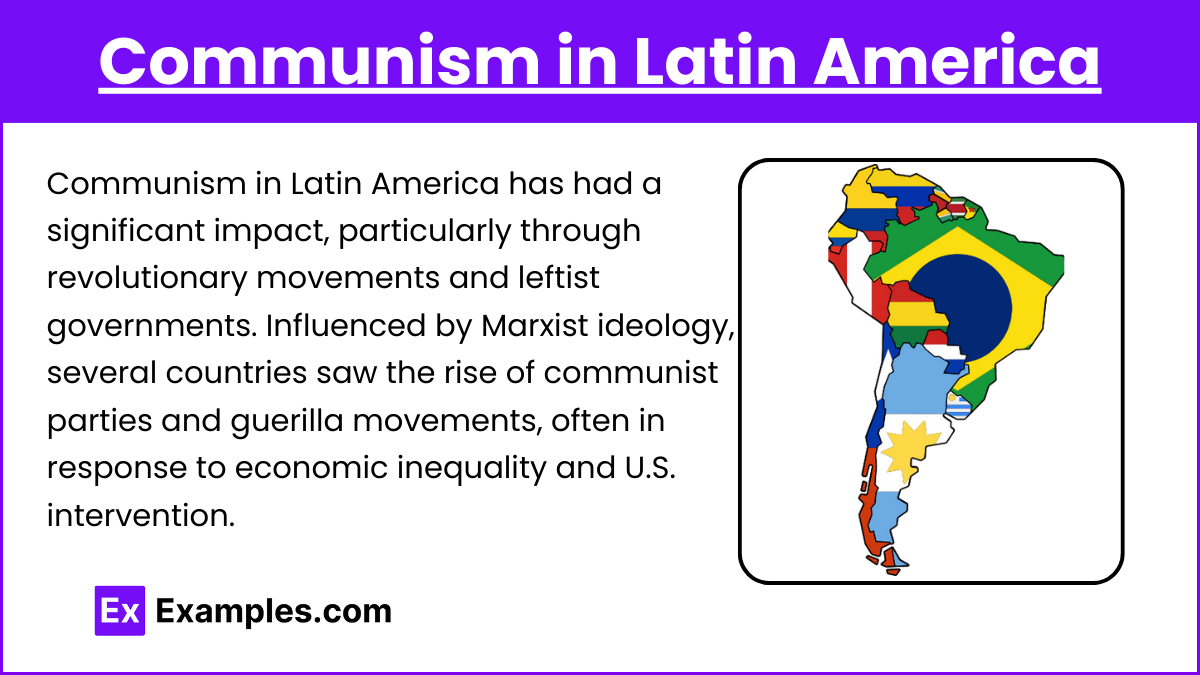
Communism in Latin America has had a significant impact, particularly through revolutionary movements and leftist governments. Influenced by Marxist ideology, several countries saw the rise of communist parties and guerilla movements, often in response to economic inequality and U.S. intervention.
- Apart from Cuba, other countries in Latin America also experienced the influence of Marxist movements, although with varying degrees of success.
- In Nicaragua, the Sandinistas (led by Daniel Ortega) overthrew the Somoza dictatorship in 1979, establishing a socialist government.
- In Chile, Salvador Allende was elected in 1970, becoming the world’s first Marxist president to come to power through democratic elections. His government was overthrown in a U.S.-backed coup in 1973.
4. Cold War Context
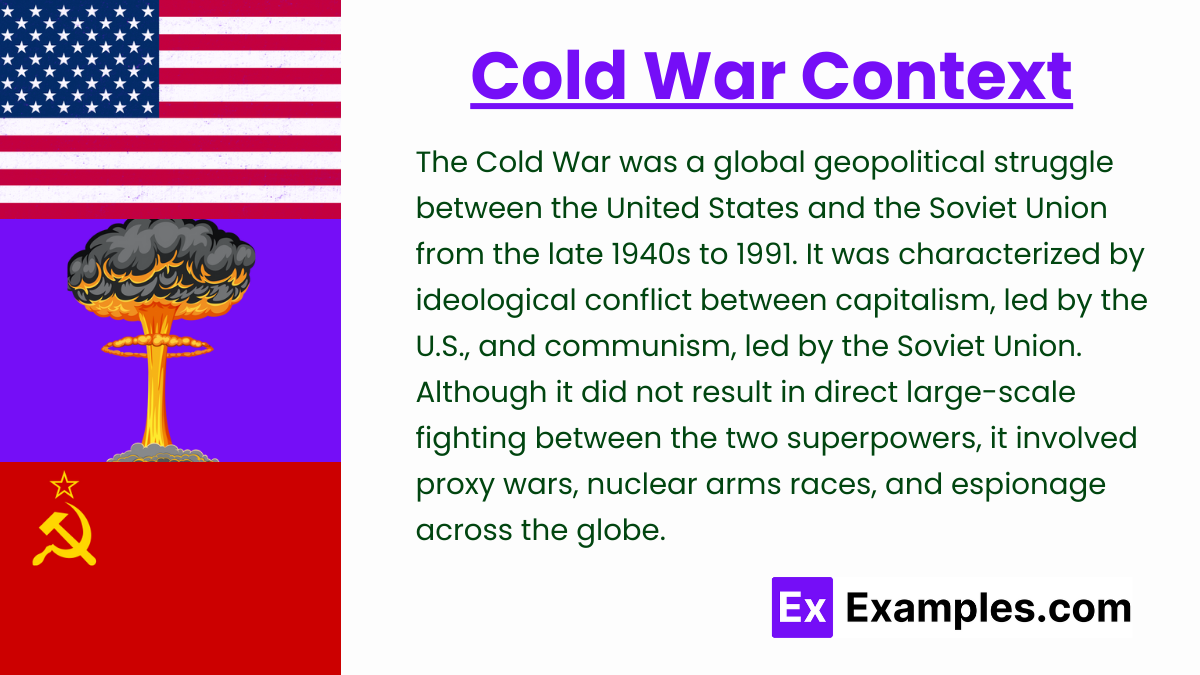
- The Cold War was a global geopolitical struggle between the United States and the Soviet Union from the late 1940s to 1991. It was characterized by ideological conflict between capitalism, led by the U.S., and communism, led by the Soviet Union. Although it did not result in direct large-scale fighting between the two superpowers, it involved proxy wars, nuclear arms races, and espionage across the globe.
- The U.S. pursued a policy of containment to prevent the further spread of communism, leading to proxy wars in Korea, Vietnam, and other parts of the world.
- The Truman Doctrine and Marshall Plan were part of the U.S. strategy to rebuild and protect Western Europe from communist influence.
Examples
Example 1: Russian Revolution (1917)
The Bolshevik Revolution established the first communist state, inspiring global socialist movements and shaping future revolutions.
Example 2: Chinese Civil War (1945-1949)
Mao Zedong’s victory led to the establishment of a communist regime in China, significantly influencing Asia.
Example 3: Cuban Revolution (1959)
Fidel Castro’s rise to power in Cuba established a communist government, serving as a model for Latin American movements.
Example 4: Vietnam War (1955-1975)
The communist victory in Vietnam unified the country, exemplifying the spread of communism in Southeast Asia.
Example 5: Eastern European Revolutions (1989)
The fall of communist governments in Eastern Europe marked a significant decline in Soviet influence and the rise of democracy.
MCQs
Question 1
What was the primary outcome of the Russian Revolution of 1917?
A) The establishment of a constitutional monarchy
B) The rise of a communist government
C) The expansion of imperial control
D) The creation of the United Nations
Answer: B) The rise of a communist government
Explanation: The Russian Revolution resulted in the Bolsheviks seizing power and establishing the first communist government, influencing global socialist movements.
Question 2
Which event marked the beginning of communist rule in China?
A) The Boxer Rebellion
B) The Long March
C) The Chinese Civil War
D) The Opium Wars
Answer: C) The Chinese Civil War
Explanation: The Chinese Civil War ended with the Communist Party’s victory, establishing the People’s Republic of China and expanding communism in Asia.
Question 3
What was a significant consequence of the Cuban Revolution in 1959?
A) The establishment of a democratic government
B) Increased tensions during the Cold War
C) The expansion of U.S. influence in Latin America
D) The dissolution of the Soviet Union
Answer: B) Increased tensions during the Cold War
Explanation: The Cuban Revolution created a communist state aligned with the Soviet Union, intensifying Cold War tensions, especially during the Missile Crisis.

